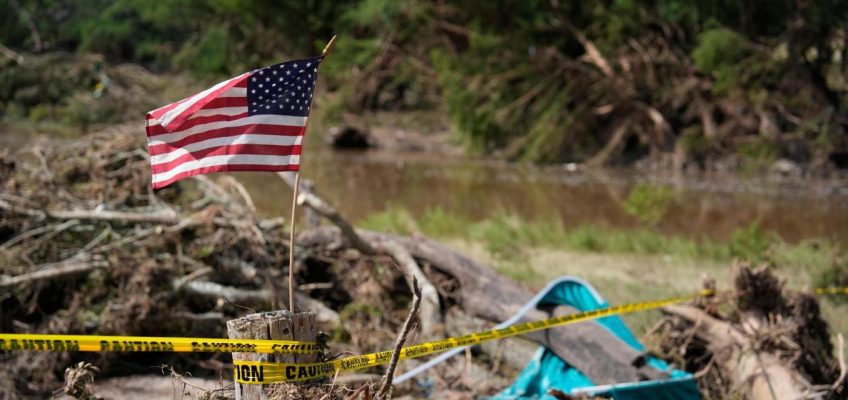A recent report by the NYC Biodiversity Task Force says the city needs more funds to protect its increasingly at-risk fauna and flora.
Jamaica Bay in Queens is a critical habitat for birds, supporting some 325 species. (Photo by Adi Talwar)
Most people think of New York City as a concrete jungle where nature is hard to find. But a new report on the importance of protecting the Big Apple’s biodiversity begs to differ.
The city is also a rich ecological hotspot that rare species like the Monarch Butterfly, the Atlantic Coast Leopard Frog, and the endangered Butternut tree call home, the report notes.
“We have a lot of nature here. It’s really important to highlight that because when we don’t, city officials undermine it,” said botanist Marielle Anzelone, lead author of the report and co-founder of the NYC Biodiversity Task Force, which published it.
Last month, budget negotiations came to a close with New York City setting aside only 0.6 percent of its $115.9 billion budget for the Parks Department, which is in charge of managing the city’s fauna and flora.
A chronically underfunded Parks Department—which has received between 0.5 and 0.6 percent of the city’s total budget for 30 years—and the lack of a citywide biodiversity protection plan puts the city’s natural wonders at risk, the report says.
The Big Apple has already lost 84 percent of its salt marshes and 99 percent of its freshwater wetlands and streams over the last 120 years, according to the report, thanks in large part to coastal fill and development.
“This makes the plants and animals that depend on these systems extraordinarily rare in the five boroughs,” the report notes.
New York is located along the Atlantic Flyway, a major migratory path that hundreds of species of birds, bats, butterflies, and dragonflies pass through annually, relying on its green spaces and waterways to find shelter as they do.
They find solace in the mosaic of ecosystems that cover approximately 20,000 acres of land across the five boroughs from forests to grasslands, beaches, and freshwater wetlands.
Wetlands on Staten Island. (Photo by Adi Talwar)
New Yorkers might spot the American Beaver lurking in the Bronx River or come across 200 native kinds of bees buzzing through its skyscrapers.
Keeping the city’s biodiversity alive is important because thriving ecosystems guarantee cleaner air and water, cooler temperatures and prevent diseases. This is especially important in low-income communities, as the neighborhoods with the highest poverty rates in the five boroughs also have the highest asthma rates, according to the city’s Health Department.
To keep this vast ecologically rich environment alive and thriving, the city needs to pour more resources and political willpower into protecting it, the NYC Biodiversity Task Force says.
The city’s Parks Department, which manages 12,400 acres of parkland where ecologically significant fauna and flora thrive, has been chronically underfunded for decades.
Back in the 1960s, Parks received 1.4 percent of the city’s budget, according to the non-profit New Yorkers for Parks. But after a fiscal crisis hit in the late 1970s, the agency’s budget was slashed to between 0.5 percent and 0.6 percent, where it remains today.
By comparison, other major U.S cities like Los Angeles, Chicago and Minneapolis, reportedly dedicate between 2 and 5 percent of their municipal budgets to parks.
When Mayor Eric Adams campaigned for office he promised to dedicate 1 percent of the city’s total budget to parks, but has yet to make due on his pledge.
Parks does plan to spend $10.4 billion on capital improvements over the next 10 years, which includes $891 million for land acquisition, tree planting, and green infrastructure, the mayor’s office noted in an email.
And in the most recent budget deal for fiscal year 2026, which elected officials finalized last month, $687.6 million was set aside for parks. That includes a $47 million bump than what City Hall initially intended to spend when funding negotiations first kicked off, the mayor’s office noted in an email.
But the budget falls short of the $79.5 million environmental advocates said is needed to restore 795 vital staff positions that help take care of the city’s natural wonders.
The final budget does guarantee $6.1 million to hire over 70 additional parks maintenance workers and lift a current hiring freeze for certain positions.
Still, the new budget “only restores roughly one fourth of the positions, leaving the Parks Department down roughly 600 positions still,” according to the Play Fair for Parks Coalition.
Central Park. (Daniel Avila/NYC Parks)
“We’ve made major investments to improve our parks and public amenities, including increasing the Parks budget and headcount to their highest level, as we aim to reach the 1 percent target,” a City Hall spokesperson said in an email.
But taking care of the city’s biodiversity shouldn’t fall on the shoulders of the Park’s Department alone, Anzelone says.
“They are not able to do this work on their own. Nor should the topic of biodiversity be siloed into just the Parks Department. We need a citywide plan to protect our natural environment,” Anzelone said.
The city does have a biodiversity public awareness campaign and it leads the Forever Wild Program, which aims to protect ecologically significant habitats across the parks system. It also operates a Plant Ecology Center and Nursery that includes the largest municipal seed collection in the country, according to City Hall.
While the administration has a plan to tackle climate change and build a more resilient city through its PlaNYC agenda, Anzelone says it lacks a comprehensive biodiversity blueprint to protect fauna and flora.
“New York City is a climate leader. We want New York City to be a biodiversity leader too,” she added.
To reach the reporter behind this story, contact Mariana@citylimits.org. To reach the editor, contact Jeanmarie@citylimits.org
Want to republish this story? Find City Limits’ reprint policy here.
The post As Parks Get Shortchanged on City Budget, NYC Biodiversity Faces Risks, Report Says appeared first on City Limits.




